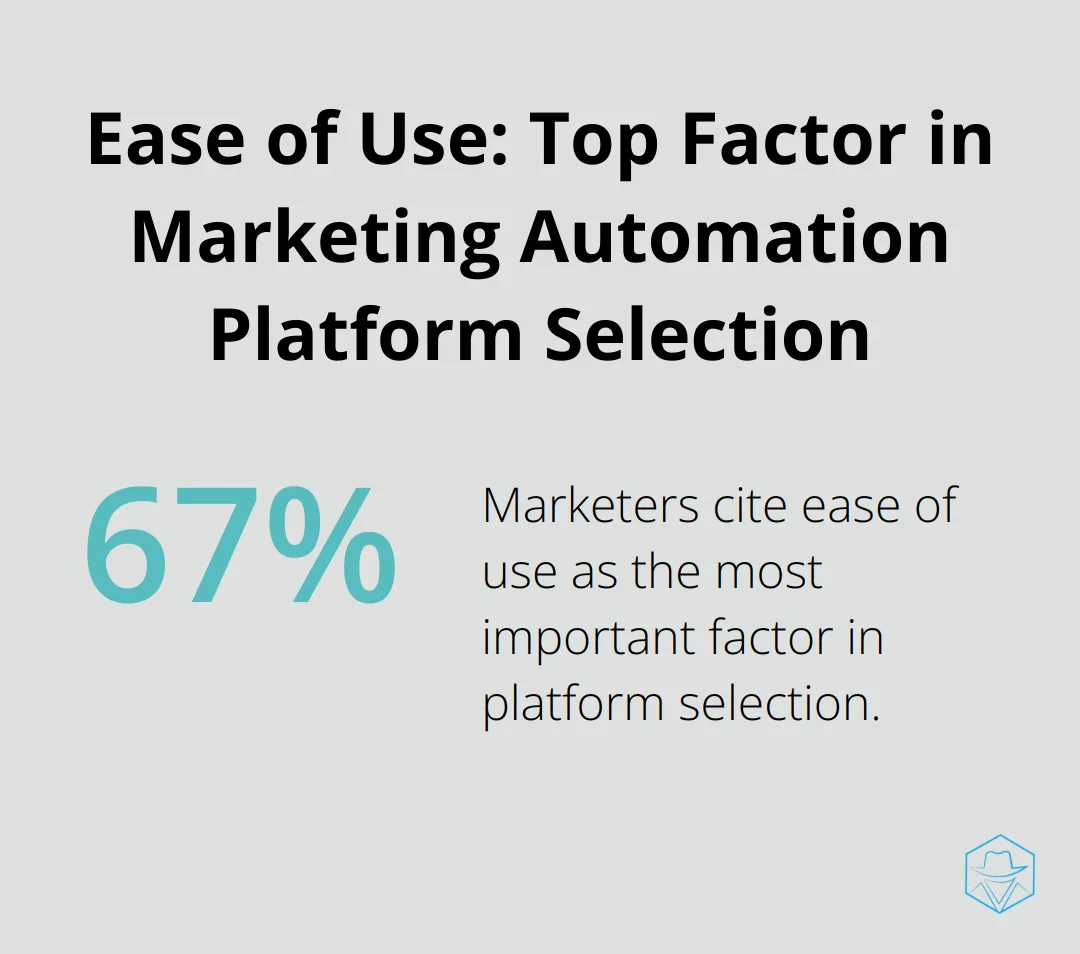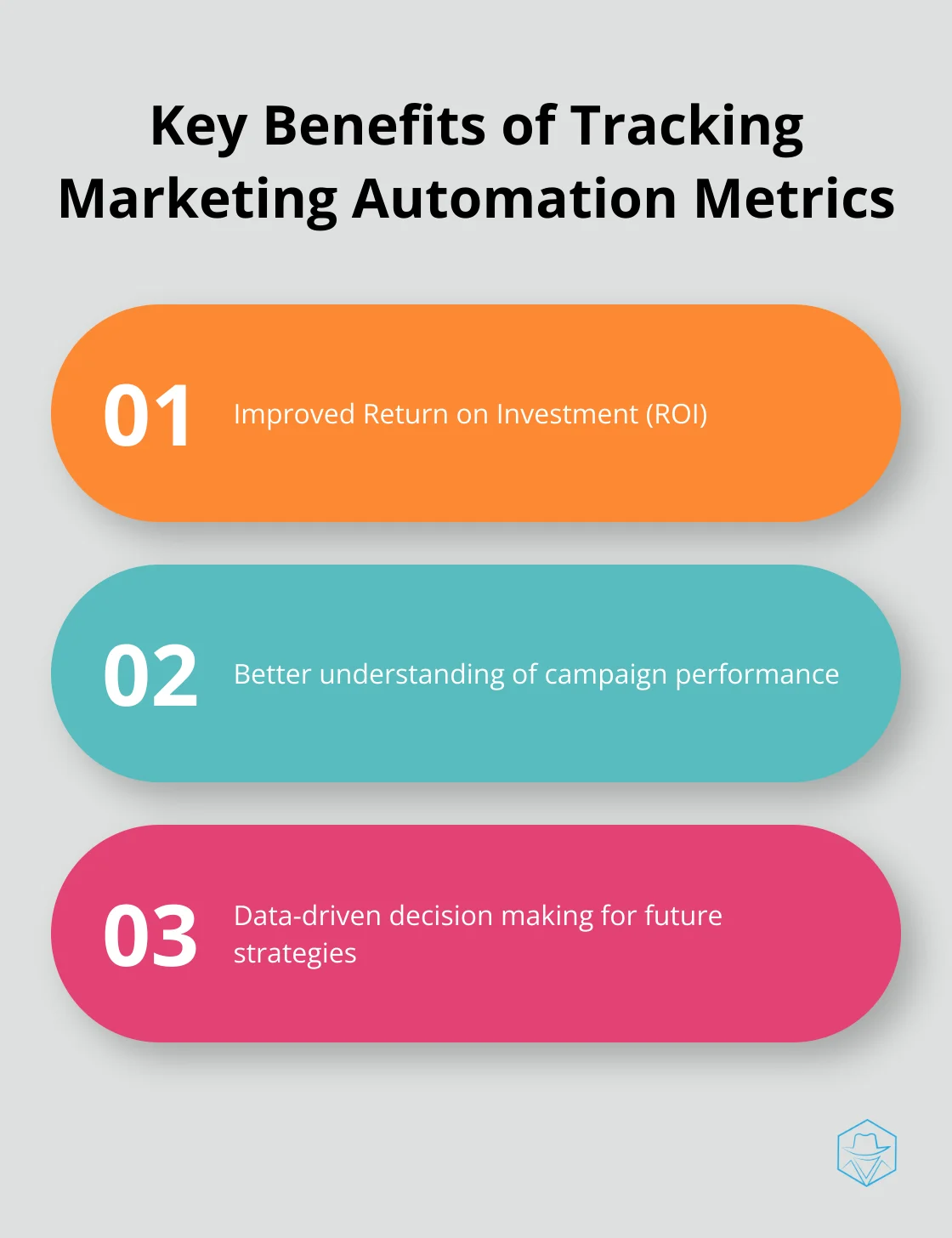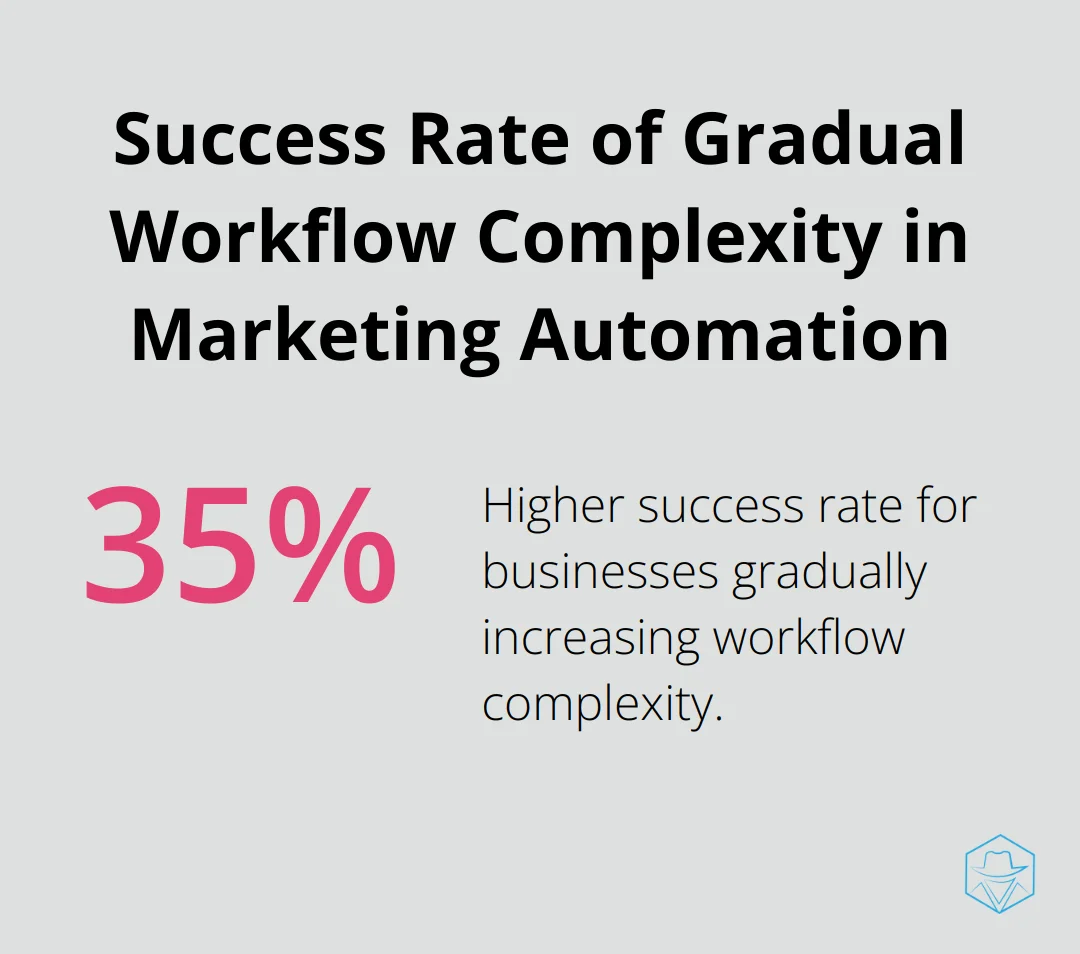Successful Marketing Automation Implementation Tips

Marketing automation implementation can revolutionize your business, but it’s not without its challenges. At Drop Cowboy, we’ve seen firsthand how proper execution can lead to remarkable results.
This guide will walk you through the essential steps to ensure your marketing automation efforts are successful from the start. We’ll cover everything from choosing the right platform to optimizing your campaigns for maximum impact.
How to Select the Ideal Marketing Automation Platform
Choosing the right marketing automation platform can determine the success of your automation efforts. Many businesses struggle with platforms that don’t align with their needs, leading to wasted resources and missed opportunities.
Identify Your Specific Requirements
Start by thoroughly assessing your business needs and goals. Do you want to streamline email campaigns, automate social media posts, or manage complex multi-channel workflows? Create a list of must-have features and nice-to-haves. This list will help you narrow down your options and avoid paying for unnecessary features.
Evaluate Platform Capabilities
After you identify your needs, examine the features of different platforms. Look for tools that offer robust analytics, easy-to-use campaign builders, and strong customer support. A 2023 Gartner report found that 67% of marketers cite ease of use as the most important factor when choosing a marketing automation platform.

Consider Integration and Scalability
Your marketing automation platform should work seamlessly with your existing tech stack. Check if the platform integrates with your CRM, e-commerce platform, and other essential tools. Also, think about your future growth. A platform that seems perfect now might become limiting as your business expands.
HubSpot’s 2023 State of Marketing Automation report found that 61% of businesses using marketing automation increased their marketing budget for the following year (indicating the need for scalable solutions). While HubSpot is popular, Drop Cowboy offers unparalleled integration capabilities, especially for businesses looking to leverage advanced communication features like ringless voicemail and SMS marketing.
Analyze Pricing Structures
Don’t just look at the sticker price. Understand the pricing model and what’s included at each tier. Some platforms charge based on the number of contacts, while others focus on features or usage. Watch out for hidden costs like onboarding fees or charges for additional users. Drop Cowboy, for instance, charges only for successful message deliveries.
The cheapest option isn’t always the most cost-effective in the long run. A slightly more expensive platform that aligns perfectly with your needs can provide a much better return on investment.
Test Before You Commit
Many platforms offer free trials or demos. Try to use these opportunities to test the platform’s functionality and user-friendliness. This hands-on experience will give you valuable insights into how well the platform fits your specific needs and workflows.
As you move forward in your selection process, keep in mind that the right platform will not only meet your current needs but also support your future growth and evolving marketing strategies.
How to Create a Winning Marketing Automation Strategy
Define Clear Objectives and KPIs
The foundation of a successful marketing automation strategy lies in setting specific, measurable objectives. Define clear KPIs for your efforts, such as email open rates, click-through rates, conversion rates, and customer lifetime value. A 2023 Mailchimp report revealed that businesses which regularly track these metrics experience a 23% higher ROI on their marketing automation investments.

Map the Customer Journey
Understanding your customer’s journey is essential for effective automation. Start by creating detailed buyer personas based on demographic data, behavior patterns, and pain points. Then, outline the typical path a customer takes from awareness to purchase and beyond.
Identify key touchpoints where automation can enhance the customer experience. You might set up a welcome email series for new subscribers or trigger a personalized offer based on a customer’s browsing history. A study by Epsilon found that 80% of consumers are more likely to make a purchase when brands offer personalized experiences.
Craft Targeted Content
With your customer journey mapped out, it’s time to create content that resonates with your audience at each stage of the funnel. For the awareness stage, focus on educational content that addresses your audience’s pain points. As they move down the funnel, shift towards more product-focused content that highlights your unique value proposition.
Tailor your content not just to the stage of the journey, but also to the specific channel. What works well in an email might not be as effective in an SMS or a ringless voicemail. Test different formats and messages to find what resonates best with your audience on each platform.
Leverage Personalization Technologies
Personalization is key to successful marketing automation. Technologies like AI-powered voice cloning (such as Drop Cowboy’s Mimic AI™) can create personalized voice messages that feel authentic and engaging. This level of personalization can significantly boost conversions and foster stronger connections with your audience.
Implement Compliance Measures
As you develop your strategy, don’t forget to incorporate compliance measures. Ensure that your automated messages adhere to relevant regulations (like GDPR or CCPA) and industry best practices. This not only protects your business but also builds trust with your audience.
Now that you’ve laid the groundwork for your marketing automation strategy, it’s time to put it into action. The next section will guide you through the process of implementing and optimizing your campaigns for maximum impact.
How to Implement and Optimize Your Campaigns
Set Up Automated Workflows
The first step in implementing your marketing automation campaigns involves the creation of automated workflows. These sequences of actions trigger based on specific customer behaviors or time-based rules. For example, you might create a workflow that sends a series of welcome emails to new subscribers, or one that follows up with customers who have abandoned their shopping carts.
Start small and build complexity over time. Begin with simple, linear workflows and gradually introduce more sophisticated branching logic as you become more comfortable with your chosen platform. A 2023 study by Epsilon found that businesses which start with simple workflows and gradually increase complexity see a 35% higher success rate in their automation efforts.

Personalize Your Messages
Personalization plays a key role in the success of your automated campaigns. Use the customer data you’ve collected to tailor your messages to each recipient. This goes beyond simply using their name in the subject line. Segment your audience based on their behavior, preferences, and demographics, and create targeted content for each segment.
For instance, if you run an e-commerce store, you might send different product recommendations to customers based on their past purchases or browsing history. A study by Experian found that personalized emails deliver 6x higher transaction rates than non-personalized emails.
Some platforms (like Drop Cowboy) offer advanced personalization features such as voice cloning technology. This allows you to create personalized voice messages that sound like they’re coming directly from you or a member of your team, adding a human touch to your automated communications.
Test and Refine Continuously
To truly optimize your marketing automation efforts, you need to test and refine your campaigns continuously. This involves A/B testing different elements of your messages, such as subject lines, content, and send times, to see what resonates best with your audience.
Don’t limit yourself to testing one element at a time. Use multivariate testing to examine how different combinations of elements perform. A report by Litmus found that companies that regularly conduct A/B tests see a 37% higher ROI on their email marketing efforts.
Monitor your KPIs closely and be prepared to make adjustments based on the data you’re seeing. If a particular campaign doesn’t perform as well as expected, pause it and make changes. Marketing automation allows you to be agile and responsive to your audience’s needs and behaviors.
Leverage Advanced Features
Try to make the most of advanced features offered by your chosen platform. For example, some platforms provide AI-powered analytics that can help you identify trends and opportunities you might otherwise miss. Others (like Drop Cowboy) offer unique communication channels such as ringless voicemail, which can significantly boost engagement rates.
Use these advanced features to create more sophisticated and effective campaigns. For instance, you might use predictive analytics to identify which customers are most likely to make a purchase, and then target them with personalized offers.
Ensure Compliance and Best Practices
As you implement and optimize your campaigns, make sure you adhere to relevant regulations (such as GDPR or CCPA) and industry best practices. This not only protects your business but also builds trust with your audience.
Many platforms (including Drop Cowboy) provide built-in compliance tools to help you navigate these requirements. Use these tools to ensure your automated messages comply with regulations and respect your customers’ preferences.
Final Thoughts
Marketing automation implementation transforms businesses through careful planning and execution. Companies must select platforms that align with their specific needs and goals to unlock significant benefits. Drop Cowboy offers powerful tools to enhance marketing efforts, including advanced features like ringless voicemail and SMS marketing.
A well-crafted strategy defines clear objectives, maps customer journeys, and creates targeted content for each funnel stage. Personalization technologies allow tailored messages that resonate with audiences effectively. Companies should set up automated workflows triggered by specific customer behaviors, starting simple and increasing complexity over time.
Continuous testing and refinement optimize campaign performance through A/B testing and analytics. Advanced features such as AI-powered analytics and unique communication channels create sophisticated campaigns that drive real results. Marketing automation remains an ongoing process of improvement, requiring agility and responsiveness to audience needs for measurable business growth.
blog-dropcowboy-com
Related posts

July 1, 2025
Nooks Dialer: Simplify Your Communication
Discover how Nooks Dialer simplifies communication with seamless calls, boosting productivity and efficiency effortlessly.

June 16, 2025
Easy Ways to Expand Your Outreach with Targeted Telemarketing Services
Struggling to get your message in front of the right people? Many businesses face this challenge as digital noise makes it harder to stand out. One proven method that still delivers results is using telemarketing services to build direct connections with potential clients. These services allow for real-time interaction, helping companies reach targeted leads with greater impact. […]

August 22, 2025
Understanding Ringless Technology for Non-Intrusive Marketing
Explore ringless technology for non-intrusive marketing. Learn how this tool drives engagement without disrupting customer experience.

May 27, 2025
Wholesale Real Estate for Beginners: Getting Started
Explore wholesale real estate for beginners with practical tips and strategies to kickstart your property investment journey effectively and confidently.

April 14, 2025
Top Email Marketing Tools for Shopify Store Success
Discover the best email marketing Shopify tools to boost sales, engage customers, and enhance your store’s success seamlessly.

April 14, 2025
Is Triple Whale Worth It? An Honest Review
Explore an honest Triple Whale review. Learn if Triple Whale boosts e-commerce insights with features, pricing, and user experiences.